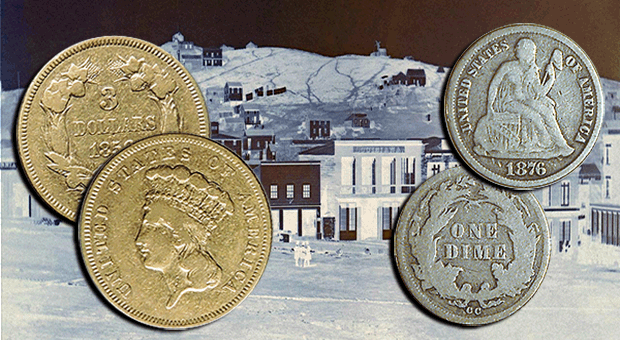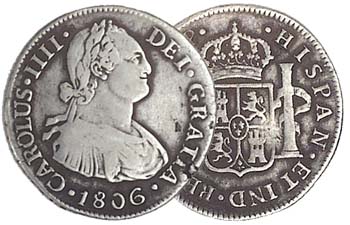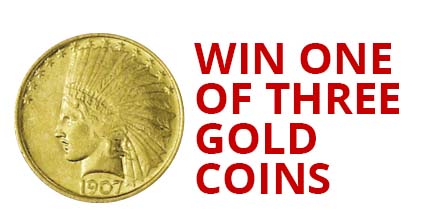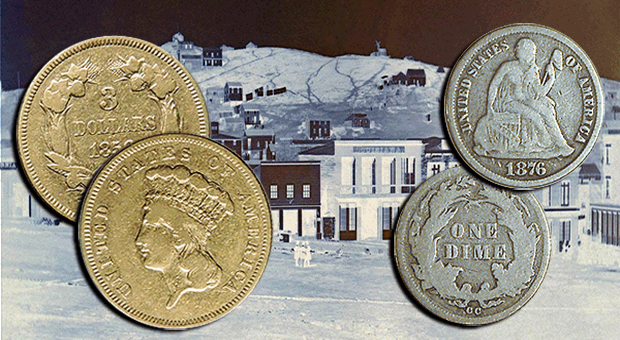Like Potato Chips, One Mint is Never Enough
Oct 12th 2018

Most readers are familiar with P, D, and S coins, but did you know that before there was a CC mintmark, there was just a C? And that the D mintmark used by Denver was used before the Civil War by a mint located in the Old South?
Prior to the first circulating coins of the Philadelphia Mint in 1793, the fledgling nation was a free-for-all when it came to acceptable forms of currency. Colonial and foreign currency was used widely, as well as coins minted privately by states. Even trade of livestock was considered an adequate form of monetary transaction.
| Spanish 2-reales would have been commonly seen in colonial America. They remained legal tender in the U.S. until 1857. |  |
Congress passed the Coinage Act of 1792 which established parameters and regulations for producing currency and for the creation of the first minting facility of the United States in Philadelphia (then the nation’s capital). Before its passage, the U.S. did not have a standard for its unit of money, let alone regulations to instill standard weight, content or purity of the precious metals used for coinage. As Americans continued to travel ever-westward building cities and towns, federal minting facilities sprang up in their wake.
One Mint is Never Enough
As the years passed, the Philadelphia Mint continued to produce coinage. In the early part of the 19th century, America saw the first of two gold rushes originate from its south. The discovery of the Carolina and Georgia Gold Belt placed immense pressure on Philadelphia’s facility to melt, refine and produce coins from the golden boon.
As a response to the increase of available gold, in 1835 an act of Congress required that three new branch mints must be opened. Located in Charlotte, North Carolina; Dahlonega, Georgia and New Orleans, Louisiana; these facilities opened their doors and began minting coinage in 1838.
The Newest Members of the U.S. Mint
The Charlotte and Dahlonega branch mints eased the demand on Philadelphia’s gold coin production as well as the expenses of the gold miners. Their proximity to these minting facilities meant that they no longer had the risks and expenses of transporting their gold on the long journey to far-off Philadelphia.
The Charlotte Mint was the first of the three facilities to open; in 1837 it began receiving gold from the public for assay (a fancy name for determining the content and quality of the metal) and refining. The following year, it produced its first coinage bearing the C mintmark. During its operation, the Charlotte Mint struck over $5 million worth of gold dollars, quarter eagles and half eagles.
Like Charlotte, the Dahlonega Mint produced only gold coins in a variety of denominations. The $3 Indian Princess Head was struck for just one year at Dahlonega; the inaugural 1854-D issue had a mintage of just 1,120. Of the three southern branch mints, New Orleans was the only other to produce the $3 gold piece for just a single year.
From the early 1800s until the Civil War, New Orleans was the fifth largest city in America. Its location along the Mississippi River was vital to import and export of goods, including gold. The New Orleans Mint produced both gold and silver coinage bearing the O mintmark and in greater quantities than its southern neighbors.
Westward Ho!
In 1849 as news of the California gold rush traveled back to the east coast, thousands of Americans journeyed westward. Born of this expansion were three additional minting facilities. The San Francisco Mint opened in 1854 to process and transform new-found gold. Although intended to produce gold coinage, the Denver Mint in Colorado was initially used as an assay office and didn’t actually produce any coins until 1906. In Nevada, the Carson City Mint produced silver coinage starting in 1870, which was mined from the famous Comstock Silver Lode.
Occupied Territory
The three southern mints continued operations until their occupation by the Confederate government at the beginning of the Civil War in 1861. Dahlonega stands apart; it’s 1861-D Indian Princess gold dollar is considered the rarest of the series. While under control of the Confederacy, an estimated 1,200 or so gold dollars were struck with the facility’s remaining gold. No minting had begun prior to its occupation by the Confederacy and no federal records exist to verify the number of coins produced. Today, approximately 60-75 or so of these coins are known to exist. According to PCGS Auction Prices, an auction record of $149,500 was set in 2008 for an NGC MS-65 1861-D Indian Princess gold dollar. As recently as September of this year, a lesser-grade MS-60 sold for $80,000. Just imagine owning either of those gold pieces in 1861 and being told that in 150 years or so, they would be worth five to six figures!
After Confederate occupation, Dahlonega never reopened its doors. Although Charlotte reopened after the Reconstruction period, it functioned only as an assay office until 1919; while New Orleans would continue to produce coinage until its last Morgan silver dollar was struck in 1904.
Here Today, Gone Tomorrow
Of these seven pre-20th century U.S. Mints, only three remain in operation today. Carson City became defunct after the supply of western silver dwindled. Although arguably most famous for its Morgan dollars, Carson City also produced a number of other denominations, including a dime and the oddly-valued, unpopular 20 cent piece.
Low mintage numbers, the passage of time and rarity of specific gold and silver issues makes obtaining coins minted at Charlotte, Dahlonega, New Orleans and Carson City the Holy Grail for many collectors today.


